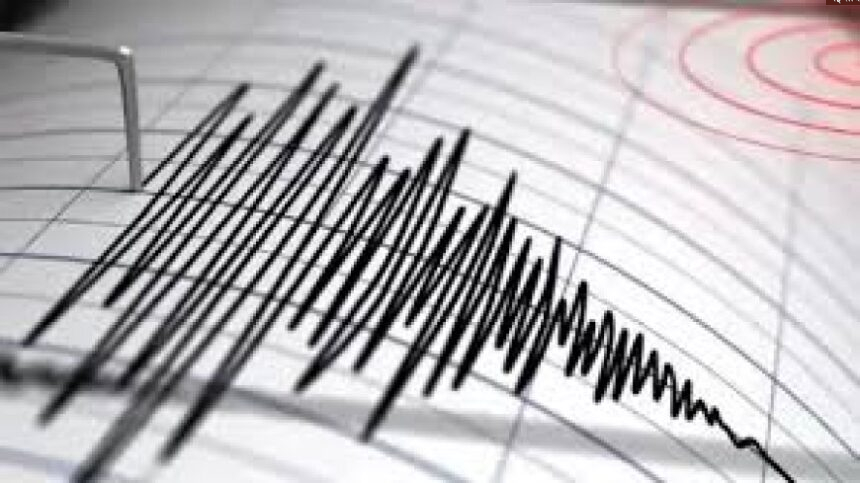Washington, D.C. – A powerful earthquake with a magnitude of 6.9 struck off the coast of New Britain Island in Papua New Guinea early this morning, triggering a tsunami warning for the region. The earthquake, according to the United States Geological Survey (USGS), was centered 10 kilometers beneath the Earth’s surface, about 194 kilometers southeast of Kimbe. It struck at 6:04 AM local time, shaking the area with significant intensity.
The Pacific Tsunami Warning Center has issued a warning for potential tsunami waves, which are expected to be between one to three meters high, following the earthquake. The warning also mentions that smaller tsunami waves could be observed on the Solomon Islands. The tremors from the 6.9 magnitude earthquake were followed by a secondary earthquake in the same area, with a magnitude of 5.3, about 30 minutes later, according to USGS reports.
New Britain Island, which is home to nearly 500,000 residents, felt the full force of the earthquake, but so far, there have been no reports of damage or casualties. However, given the location’s proximity to the Pacific Ring of Fire – a hotspot for seismic and volcanic activity – authorities remain on high alert.
The warning issued by the Pacific Tsunami Warning Center raised concerns across the region, especially in Papua New Guinea, as it lies on the Ring of Fire. This region is particularly prone to frequent earthquakes, volcanic eruptions, and other seismic activities. The Pacific Ring of Fire is notorious for its tectonic activity, with countries like Indonesia, Japan, and Papua New Guinea experiencing regular earthquake tremors and volcanic eruptions.
Key Details of the Earthquake and Aftershocks
-
Location: Near New Britain Island, Papua New Guinea.
-
Magnitude: 6.9 on the Richter scale.
-
Depth: 10 kilometers beneath the Earth’s surface.
-
Time of Occurrence: 6:04 AM local time on Friday.
-
Aftershock: A second aftershock of magnitude 5.3 occurred approximately 30 minutes later.
The earthquake was strongly felt in the affected regions, but initial reports indicate that there has been no significant damage to infrastructure or loss of life as of now. However, authorities are continuing to monitor the situation closely, particularly for any tsunami waves that could follow.
Tsunami Warning Issued
Following the earthquake, the Pacific Tsunami Warning Center issued an advisory predicting tsunami waves up to three meters high. Although the initial tsunami threat is primarily focused on Papua New Guinea, the warning also extends to nearby regions, including the Solomon Islands, where smaller waves are expected.
Despite the warning, the closest neighboring country, Australia, has reported no immediate tsunami threat. Additionally, New Zealand, located further to the southeast, has not issued any tsunami alerts at this time.
The Pacific Ring of Fire and its Impact
Papua New Guinea lies within the Pacific Ring of Fire, an area notorious for its seismic activity due to the constant movement of tectonic plates. This region experiences frequent earthquakes, volcanic eruptions, and other natural disasters. The Ring of Fire stretches across countries such as Japan, Indonesia, the Philippines, and New Zealand, all of which are prone to similar seismic events.
The frequency of earthquakes and the risk of tsunamis in these regions have prompted authorities to establish early warning systems to help mitigate damage and loss of life. Despite these measures, the unpredictability of such events remains a challenge for local governments and disaster response teams.
Ongoing Monitoring and Response
As the situation develops, local authorities and international organizations are working together to monitor the region closely. Seismologists are keeping an eye on potential aftershocks, while disaster response teams are on standby in case of a tsunami or any other further seismic activity.
While the earthquake did not cause immediate widespread damage, the region remains vulnerable, and officials are advising residents to stay alert. The threat of tsunami waves, even if they are not massive, could still cause significant coastal impacts, and precautions are being taken.
In conclusion, the earthquake near New Britain Island and the subsequent tsunami warning highlight the ongoing risks faced by countries in the Pacific Ring of Fire. As the region continues to brace for any aftereffects, it serves as a reminder of the constant seismic activity that shapes the geological landscape of this part of the world.





